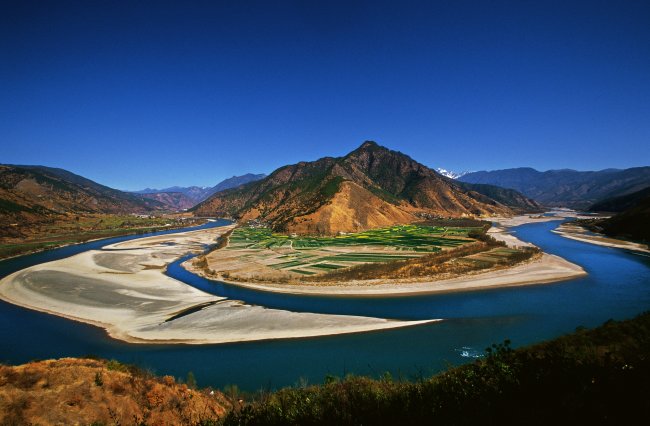
The First Bend of the Yangtze River is located on the north side of the highway leading from Dali to Lijiang, about 70 km. from lijiang Town. The upper reaches of the Yangtze River is named the Jinsha River, which originates from the Qinghai-Tibet Plateau. The Jinsha River flowed southward along the Hengduan Mountain ranges and was forced to the turn to north because of the Alpine movements which caused changes in the earth's physiognomy.

On the hill as the river bends stands the small Shigu (stone drum) Township. It is so called because of the existence of a drum-like stone tablet. It is 1.5 m. in diametre, 70 mm. in thickness, being the memorial tablet marking the victory of territorial expansion of Lijiangs local ruler Baichuan, surnamed Mu, in the 27th to 40th year of the Jiaqing era of the Ming Dynasty (1548-1561). It is one of the earliest stone tablets hitherto found at Lijiang.
The river is broadened at the bend and flows slowly. The famous historical event, such as "Zhuge Liang's Crossing the Lushni River in the Fifth Month", Kublai Khan's "Crossing the River on Leather Rafts" all chose this place as a ferry. In May 1936, the Red Army to leaders He Long, Ren Bishi and Guan Xianying led the Second Route Red Army to march north, crossing the river also at this place. At present, a splendid memorial tablet marking the victorious crossing is erected here.
Admission Fee:¥0

You will only receive emails that you permitted upon submission and your email address will never be shared with any third parties without your express permission.
